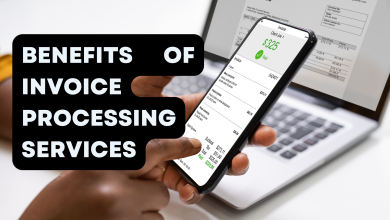How to Choose a Program for a Marketplace Simulation?

Marketplace simulation helps students understand how business works in the real world. In these programs, students make decisions that shape a business environment. Their actions and the impact of their choices during the simulation are seen in real-time, or almost real-time.
So, a good simulation isn’t just about the environment; it’s about the program as a whole. The reality students face in the simulation depends on how well the program runs. Choosing the right program is the first step towards making the simulation a valuable learning experience. What should you think about to get the best program for your specific needs?
What is a Marketplace Simulation?
Lemme explain, What is a business simulation? A marketplace simulation is a digital platform where participants engage in activities that replicate the dynamics of real-world markets. These simulations create a controlled yet authentic environment for testing strategies, analyzing competition, and understanding the outcomes of various decisions. Participants typically assume roles such as entrepreneurs, marketers, or product developers, making critical choices regarding pricing, production, and promotional strategies.
In contrast to conventional classroom instruction or passive business training, marketplace simulations provide an interactive and experiential learning opportunity. These programs focus on applying theoretical knowledge through practical experience, enabling participants to grasp concepts such as supply and demand, market share, and consumer behavior.
The primary objective is to equip individuals for real-world challenges by allowing them to “fail safely” and enhance their decision-making capabilities. Whether implemented in educational institutions or corporate training programs, these simulations yield valuable insights that are challenging to achieve through other training methods.

Establish Your Objectives and Target Audience
Prior to selecting a program, it is crucial to clarify your objectives and identify your target audience. Consider the following questions,
- What knowledge or skills do you aim to impart? For instance, are you introducing students to market economics or training employees in competitive strategies?
- What is the skill level of your participants? Programs for beginners typically feature straightforward scenarios and basic concepts, while advanced simulations may involve complex variables, requiring analytical and strategic expertise.
Advanced simulations may involve complex variables, requiring participants to analyze the financial data or navigate sophisticated market dynamics. Choosing a program that aligns with the knowledge level of your audience will ensure a more engaging and effective learning experience.
Evaluate the Features of Different Programs
Marketplace simulation programs exhibit a broad spectrum of features and levels of complexity. When evaluating different options, it is essential to identify the specific aspects that are most relevant to your requirements.
- Customization: Does the program provide the ability to create customized scenarios? Such customization can be crucial if you aim for the simulation to accurately reflect your particular industry or educational objectives. Certain programs enable you to adjust variables such as market conditions, competitive dynamics, and types of products.
- Usability: Instead of spending all of their time trying to navigate through the software, participants can concentrate on learning. Focus on easily understandable layout, clear indications and non/false directions and fast customer service.
- Analytics and Reporting: It is important to evaluate the comprehensiveness of the analytics and reporting features. The capability to analyze key performance indicators (KPIs), such as profitability and market share, can significantly enrich the learning experience by providing valuable insights.
Consider Financial Constraints and Accessibility
Your financial constraints play a crucial role in selecting the appropriate program. Marketplace simulation software varies from free or low-cost alternatives suitable for small groups to premium solutions with extensive functionalities. While more expensive programs may offer advanced features, it is important not to assume they are automatically the best choice. Assess whether the features provided justify the expense and align with your objectives.
Additionally, accessibility is a significant consideration. Cloud-based platforms are increasingly favored for their flexibility and user-friendliness, enabling participants to engage with the simulation from any location with internet access. This is particularly beneficial for remote teams or online courses. Ensure that the program is compatible with the devices and operating systems utilized by your participants, and verify whether it includes technical support for any troubleshooting needs.
Read Reviews and Test the Program
If you’re looking to buy into a program, do some research and ask others who have done it. Reviewing the show can tell you more about what works and what doesn’t, which you may not have realized.
- Read reviews: Check for reviews from other users who are in the same goals or industries so you know the program is going to deliver what you want.
- Test it out: Attempt a demo or free trial if you can. You can test it out first-hand to see how it works and whether it suits you. During the trial, notice how the simulation plays, whether it is interesting and whether it’s delivering the learning goals you have specified. Testing also helps you to catch problems before you implement it in your team.
Assess Scalability and Adaptability
It’s important to also consider the scalability and elasticity of the program. Whether you will be running the simulation for a group or long-term course, make sure that your program can scale with an increasing number of students. Some are built for small teams, some can work with huge batches effortlessly. Scalability, if you change your needs, the program can evolve alongside you with no large changes or investment.
The flexibility also counts, particularly in a fast-paced industry. A good marketplace simulation should be flexible enough to be updated to accommodate any change in trend, technology or market.
For instance, if your sector is dominated by new digital tools or the world, then the simulation should have the flexibility to reflect these factors. Even the most stable programs become dated quickly and have less learning or utility.
Factor in Participant Engagement
An effective marketplace simulation keeps participants engaged through interactive and immersive features. Programs that utilize storytelling or incorporate real-world examples tend to resonate more profoundly with users, transforming the experience into one that is both educational and enjoyable.
Additionally, assess the program’s feedback mechanisms. Providing immediate and meaningful feedback enables participants to learn from their choices in real time, promoting a deeper comprehension of the subject matter. Whether through debriefing sessions, performance dashboards, or peer discussions, a program that prioritizes reflection and learning guarantees that participants derive significant lessons from the experience.
Selecting a Business Simulation
Selecting an appropriate program for a marketplace simulation necessitates thorough consideration and strategic planning. Understanding marketplace simulations and assessing your goals, target audience, desired features, budget limits, and accessibility needs will assist you choose the best alternative. User input and trial testing saves time and resources, thus they’re crucial.
The optimal program should be in harmony with your goals, provide an engaging experience for participants, and deliver practical insights to facilitate learning. With the right simulation implemented, you will empower your team or students with the necessary skills and confidence to adeptly tackle real-world market challenges.




